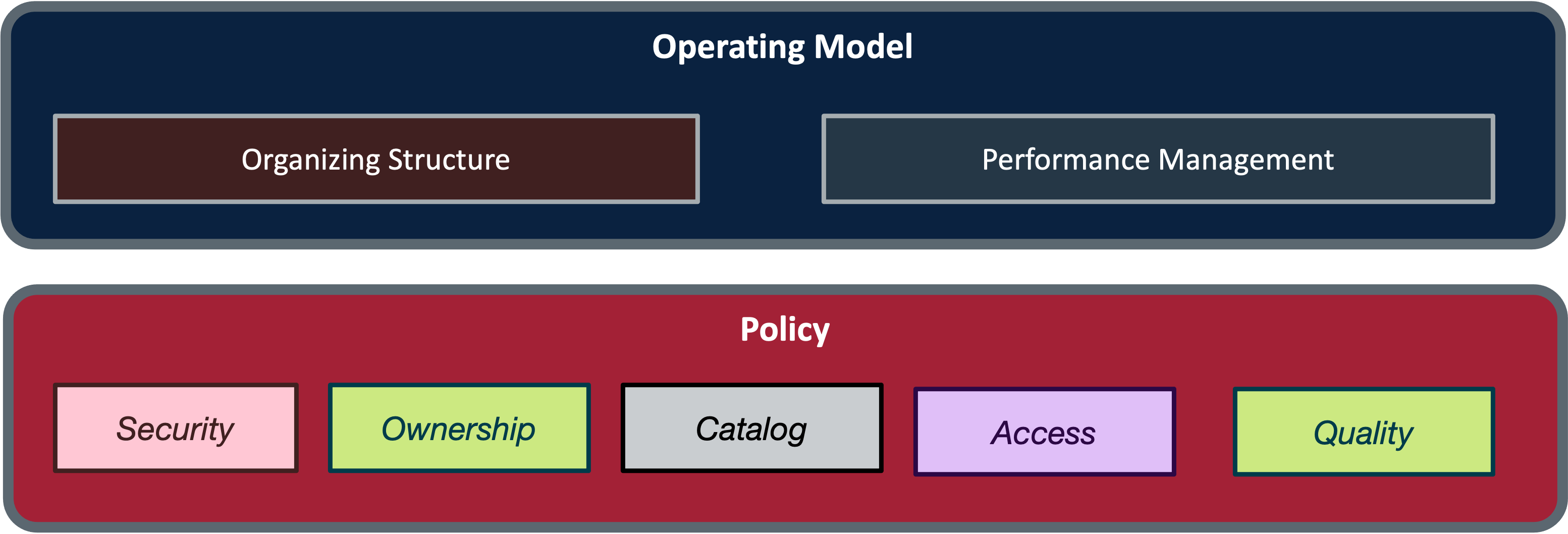Data Governance

We need to ensure all data capabilities such as availability, usability, integrity, and security are delivered as prescribed. This involves establishing policies, procedures, and standards to ensure data is accurate, consistent, and accessible. Effective data governance helps make informed decisions, comply with regulations, and protect sensitive information. It must be realistic and pragmatic.
Organizing Structure
Like governing anything complex, we break things down into smaller governable units. We structure ownership to ensure funding and accountability. Regardless of organization size, there’s a shift towards federated data architecture where data is managed within domains, as seen in the rise of logical data warehouses and data mesh, enabled by cloud data platforms. Aligning domain structures with organizational dynamics reduces friction and promotes accountability. This includes defining roles such as data owners, stewards, and custodians.
We can’t govern everything. We need a platform to prioritize data capabilities based on business needs, ensuring appropriate sponsorship. These decisions align with the organization’s data strategy, resolving priority conflicts and arbitrating consensus on data description, organization, integration, and sharing.
Performance Management
We also need mechanisms to enforce decisions and measure outcomes within the governable units and measure outcomes from them. Managing performance based on objectives within governable units ensures the delivery of data management disciplines like data quality, integration, master data, metadata management, and data product management.
Policy
We have a decent operating model to define structures, arbitrate decisions and manage performance. Now we need binding system of guidelines to guide decisions and achieve outcomes. So we defines policies as statement of intent which includes procedures, standards, mertrics and guidelines. Each of the policies would include the context of the policy, a decision and a consequence of the decision.
The combination of the operating model and policies forms what we call data governance. Various frameworks exist, but they all rely on these two aspects.
